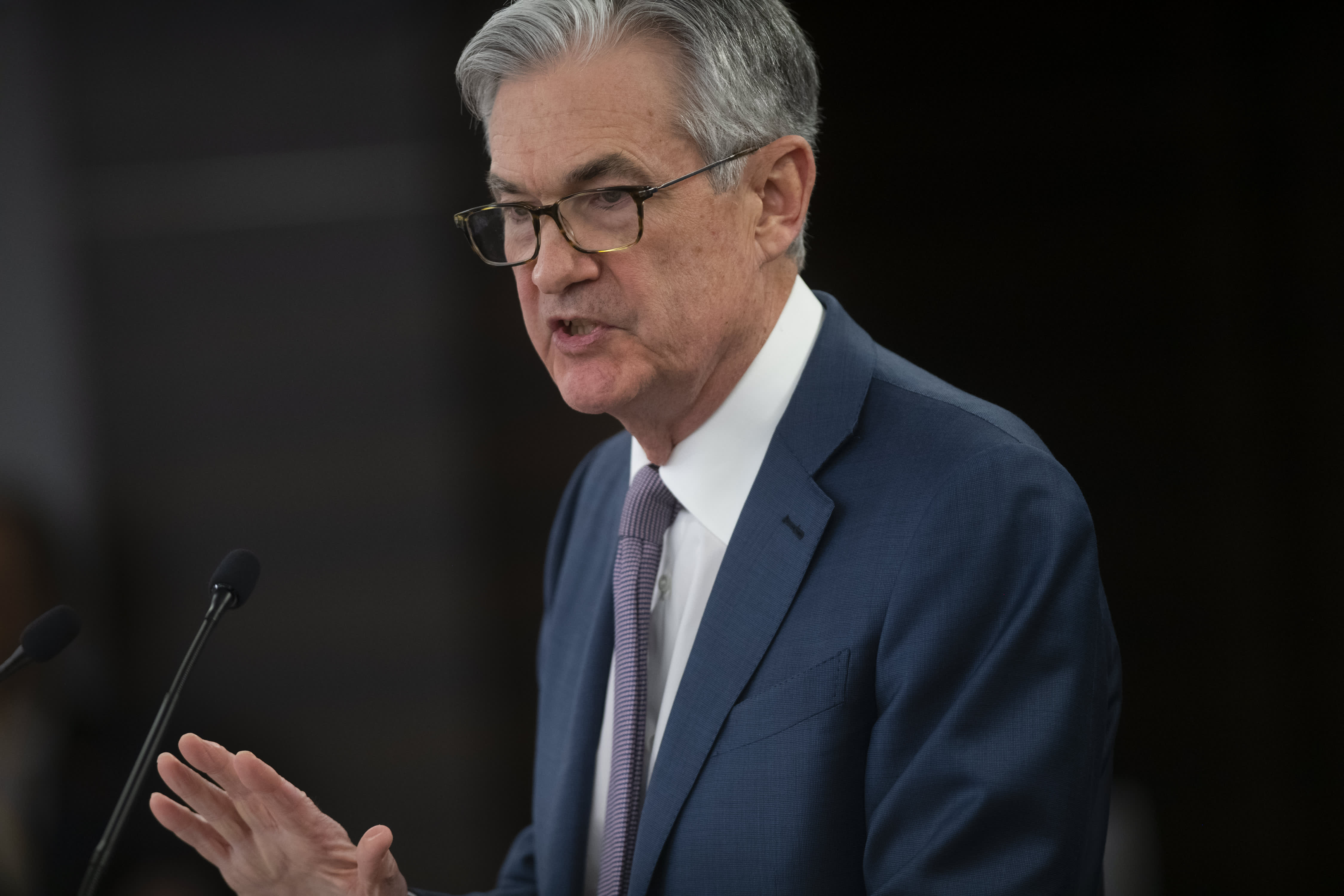
Federal Reserve Chair Jerome H. Powell during a speech on March 3, 2020 in Washington, DC.
Mark Makela/Getty Images
The federal government pumped money into the U.S. economy this spring and summer, fueling a faster than expected recovery, but Federal Reserve Chair Jerome Powell and others are warning that more help will be needed once that money is exhausted.
The first round of relief, which included a $600 weekly addition to unemployment benefits, $1,200 checks to many and the Paycheck Protection Program that encouraged companies not to lay off workers, did more than just replace the income of those laid off and sent personal income and the savings rate soaring.
Since the CARES Act expired at the end of July, political leaders have remained far apart on demands for a new deal, while President Donald Trump used a series of piecemeal executive actions to help some with smaller unemployment benefits and evictions. Recent economic data indicates an economy that is improving but at a slower rate.
Initial jobless claims beat expectations for the first full week of September, but were still historically high at 860,000. Retail sales grew again in August, but more slowly than expected, and credit card data shows a dip in spending in recent weeks.
The lack of further stimulus has some concerned that the flood of money will recede before the economy is back on its feet. At his press conference on Wednesday, Powell stressed the need for more fiscal help to keep the recovery going.
“My sense is that more fiscal support is likely to be needed. Of course the details of that are for Congress, not for the Fed, but I would just say that there are still roughly 11 million people out of work because of the pandemic, and a good portion of those people were working in industries that are likely to struggle,” Powell said.
The central banker also said that improving economic forecasts from the Fed and the private sector often assumed another stimulus deal and did not show the path the economy would take on its own.
Bankruptcy experts, including Paige Marta Skiba, an economist and law professor at Vanderbilt University, have been advocating for more stimulus and stronger protections for consumers.
The combination of stimulus and regulations have helped keep evictions, foreclosures and bankruptcies at bay, Marta Skiba said, but she fears that there will be a spike soon. She said she was watching for increasing debt collection activity to signal when the surge will come and that some of the macroeconomic data was hiding some of the struggles for lower income households.
“We’re in, maybe, the eye of the storm right now,” she said.
Dipping into savings
One of the areas where the impact of the CARES Act was readily apparent was bank deposits. FDIC data showed that cash deposits jumped by $2 trillion in the first half of the year, with an $865 billion spike in April alone breaking the previous record for a yearly increase.
Since then, as the most stringent economic restrictions receded and some returned to work, the growth in deposits slowed considerably, growing by about $50 billion from July to the week ending Sept. 2, according to the FDIC. That flattened trajectory could be due to both improved spending, like retail sales, and people having to draw down on their nest eggs.
With the economy still struggling and no certainty of future stimulus, some fear that the deposits will reverse course as Americans burn through their savings to pay for basic living expenses.
Bruce Van Saun, the CEO of Citizens Financial Group, said his customers are still “pretty flush” more than six weeks after the CARES Act ended and that there is still a “decent amount of liquidity from the stimulus.” However, he said that the economy needed more help to avoid a more sluggish recovery, saying that the $300 of unemployment benefits above the normal level was “the minimum” amount needed.
“I think the economy has held up given all the stimulus that we’ve seen from the government and the Fed. Some of the benefits from the stimulus will start to wane,” Van Saun said.
There were some green shoots of optimism about another round of stimulus in recent days. Trump said on Twitter that Republicans should increase the amount of money they are offering, while White House chief of staff Mark Meadows told CNBC that he was more confident in recent days that a deal would pass.
However, the death of Supreme Court Justice Ruth Bader Ginsburg on Friday raised the possibility of a bitter confirmation fight for her successor, leading several Wall Street analysts to downgrade the odds for another relief bill before the November election.
In the meantime, more of the relief efforts, such as the Federal Emergency Management Agency funds Trump tapped to send extra unemployment benefits and the moratorium on layoffs by airlines, are likely to expire. Powell, when asked again during his press conference about the need for fiscal stimulus, painted a more explicit picture of what the path of the economy could be if there isn’t more federal help.
“So far the economy has proven resilient to the lapsing of the Cares Act enhanced unemployment benefits, but there’s certainly a risk though that those who are unemployed appear to have saved some of those benefits and they’ll now spend them,” Powell said. “And as the months pass, if there’s no follow up on that, if there isn’t additional support and there isn’t a job for some of those people in the industries where it’s going to be very hard to find new work, then it’s going to show up in economic activity. It will also show up in things like evictions and foreclosures, things that will scar and damage the economy.”
Subscribe to CNBC PRO for exclusive insights and analysis, and live business day programming from around the world.




